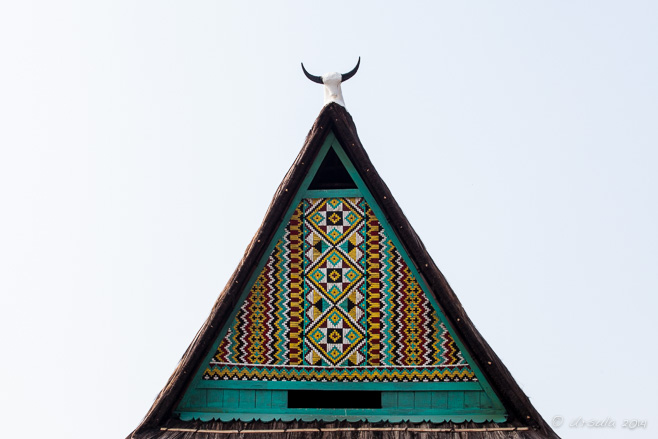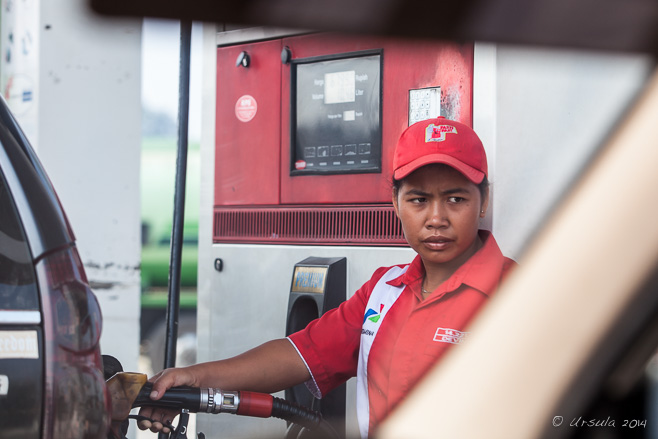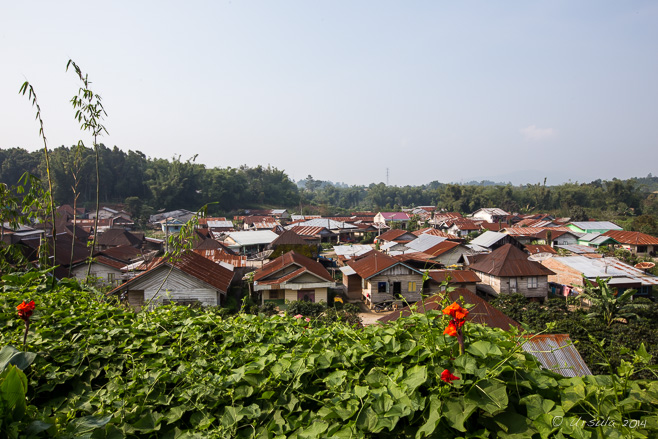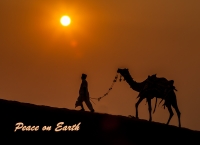
Honouring Spirits and Ancestors
The traditional woven roof of a Karo Batak house is topped with buffalo horns, Petseren, North Sumatra.
It’s a different world out there…
In this day and age where travel is relatively quick and easy, and when communication is virtually instantaneous, it is amazing to me how much diversity still exists. Some ethnic groups have managed to resist the influences around them and to preserve their age-old traditions.
Sumatra is just one of the 13,000 incredibly varied islands that make up Indonesia. And North Sumatra is just a small part of that one island.
And yet, North Sumatra is home to around five million Batak people: one of the largest of Indonesia’s over three-hundred distinct ethnolinguistic minority groups. They are thought to be descendants of people who migrated from Taiwan and the Philippines through Borneo and/or Java about 2,500 years ago.
But, the Batak are themselves not one ethnic homogeny. They can be divided into six (or nine – depending whom you believe) separate groups with different (but related) languages and customs.
Driving from Berastagi to Parapet early last year took us through the Karo Regency in Bukit Barisan Mountains; that is, through Karo Batak country.

At the Petrol Pumps
Our drive starts with a fill-up in Berastagi, where we have spent the night. I am so used to self-serve that it is a pleasure to sit in the car and watch!

Petseren Village
Before long, the “modern” tin rooftops of Petseren come into view. The village is also home to a few traditional Karo houses.

Stylised Designs
Karo Batak houses can be distinguished from other Batak styles by their hipped roofs. The colourfully woven roof patterns have magic symbolic meanings.

Village Petseren House
Rising up on low stilts, Karo Batak houses are built of wood, bamboo and straw – without the use of nails. Access is by a bamboo ladder, which can be taken in at night.

Inside a Karo Batak House
Inside the house was impossibly dark; I cranked up the ISO on the camera and shot on manual focus, hoping for the best.

Young Karo Man
I often wonder how long the old ways will last when the younger generation has access to the rest of the world via television and internet.

Fixing Lunch
Karo Batak houses are “open-plan”, with no internal walls. Mats and blankets suggest areas and work-spaces. I was never sure where to step, and felt large and clumsy next to the people inside.

Old Woman
The longhouses are communal, housing up to eight or twelve families. The “kitchen” area is visible behind grannie.

Kids Playing
Back outside in the bright sunlight, children play in the dirt…

Doing the Washing
… and a woman does her laundry.

“Modern” Housing
The old-style longhouses are no longer being built. The modern replacements are pretty basic.

Karo Batak House
Some of the old houses have stood for up to three hundred years.

Plants on the Roof
The straw roofing collects moss and even ferns.

Guarding the Grain
Animals find cubby-holes under the floors.

Sipisopiso Waterfall
Our next stop was at the northern end of Lake Toba – at the site of Indonesia’s highest waterfall. Sipisopiso Falls starts at a small underground river in the Karo Plateau, and tumbles 120 metres into the caldera that forms Lake Toba.

Mists and Fire
The area around Sipisopiso is well-tended agricultural land.

Entrance to Rumah Bolon
Our next stop is in Simalungan Batak territory, where we visit the Rumah Bolon Palace Complex near Pematang Purba. An arched entrance leads into the grounds.

Rumah Bolon Longhouse
Now a museum, the complex was home to the Simalungan Batak chiefs until 1947, when the last one died.

Pillars
The king’s long house was built of solid teak by Chief Tuan Rahalim (r.1886-1921) and stands on twenty decorated poles. All the designs are in white, for the holy spirit; red, denoting the way of life; and black, symbolising black magic.

Inside the King’s Longhouse
The long house was divided into living quarters, a cooking area, and sleeping quarters with apartments for each of the chief’s many wives. Later kings were Christian – rendering room for extra wives unnecessary.

Flowers in the Grounds

Rumah Bolon Outbuilding
All of the buildings on the complex are beautifully renovated and maintained.

Buffalo on the Roof
As is the case with the Karo Batak, in Simalungan Batak culture buffalo skulls and motifs symbolise the power of the chief.

Southern Pig-tailed Macaque
Late afternoon, as we got closer to Parapat, we came across a troop of southern pig-tailed macaques (Macaca nemestrina).

Southern Pig-tailed Macaque
Thanks to some fruit I had left over from the morning markets, the monkeys sat and posed – keeping a watchful eye on each other.

Family ~ Lake Toba
Once we settled into our accommodation in Parapat, we went for a walk along the edge of Lake Toba, where we met a local family taking a break.

Parapat Mosque
Most of the Batak people were converted to Christianity in the 19th Century by Dutch missionaries, but they also maintained their traditional beliefs. Today, surrounded by the Indonesian Muslim majority, more are practicing Islam.
Since their arrival in Sumatra, the Batak people have managed to maintain their language and aspects of their culture in the face of external pressures. Indonesian government policies do not recognise traditional religions, so while Batak still maintain many Animist traditions, their identity cards would show them as being Christian, or – to a lesser extent – Muslim.

Batak people are found among Indonesia’s poets and politicians, singers and sports-people. I guess the trick is to find a way to maintain one’s own culture while still being part of – and helping to inform – the larger society around oneself.
Not easy.
Pictures: 18February2014































.png)
.png)


[…] the centre of Batak culture. Descendants of a powerful Proto-Malayan people, the Batak comprise “six (or nine – depending whom you believe) separate groups with different (but related… The largest of these related groups – and the most culturally distinctive – […]
[…] people who probably arrived in the region about 2,500 years ago, the Batak comprise “six (or nine – depending on whom you believe) separate groups with different (but related)… The most populous of these groups is the Toba Batak, centred around Lake Toba – the […]